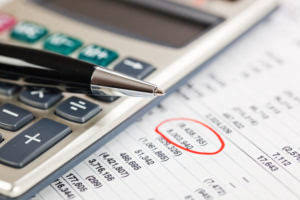The basic purpose of finding COGS is to calculate the “true cost” of merchandise sold in the period. It doesn’t reflect the cost of goods that are purchased in the period and not being sold or just kept in inventory. It helps management and investors monitor the performance of the business. When inventory is artificially https://www.bookstime.com/ inflated, COGS will be under-reported which, in turn, will lead to a higher-than-actual gross profit margin, and hence, an inflated net income. LIFO is where the latest goods added to the inventory are sold first. During periods of rising prices, goods with higher costs are sold first, leading to a higher COGS amount.

Current (Short-Term) Liabilities
The central equation used in balance sheets is assets minus liabilities equals shareholder equity. However, the current and noncurrent assets categories also include “marketable securities” categories. These contain things such as Treasury securities, bond investments, and stocks. Noncurrent assets include things that won’t be readily spendable within the next year. Tangible property, such as a factory, is the most obvious example.
How to Calculate Cost of Goods Sold (COGS)
To calculate it, add the beginning inventory value to the additional inventory cost and subtract the ending inventory value. Consumers often check price tags to determine if the item they want to buy fits their budget. But businesses also have to consider the costs of the product they make, only in a different way. For example, assume that a company purchased materials to produce four units of their goods.
Video Explanation of Cost of Goods Sold
FIFO and specific identification track a single item from start to finish. Cost of Goods Sold (COGS) is the direct cost of a product to a distributor, manufacturer, or retailer. Sales revenue minus cost of goods sold is a business’s gross profit. Balance sheets give an at-a-glance view of the assets where is cogs on balance sheet and liabilities of the company and how they relate to one another. Fundamental analysis using financial ratios is also an important set of tools that draw their data directly from the balance sheet. Financial ratio analysis uses formulas to gain insight into a company and its operations.

In order for the balance sheet to balance, total assets on one side have to equal total liabilities plus shareholders’ equity on the other side. Within each section, the assets and liabilities sections of the balance sheet are organized by how current the account is. So for the asset side, the accounts are classified typically from most liquid to least liquid.
What is the difference between a balance sheet and a financial statement?
- In accounting, debit and credit accounts should always balance out.
- Due to inflation, the cost to make rings increased before production ended.
- Therefore, a business needs to determine the value of its inventory at the beginning and end of every tax year.
- When this figure is high, it will indicate that the business will not be making big profits – although it won’t pay large amounts of taxes – which can discourage its investors and shareholders.
- They are recorded as different line items in the income statement, but both are subtracted from the revenue or total sales.
- For instance, if a company has $100,000 in sales and COGS is $30,000, the gross profit is $70,000.
- If a company had purchased five units of merchandise at different costs, the first unit sold would be the first unit bought in the first place.
Then your (beginning inventory) + (purchases) – (ending inventory) would result in a negative. Both the Old UK generally accepted accounting principles (GAAP) and the current Financial Reporting Standard (FRS) require COGS for Income Tax filing for most businesses. The terms ‘profit and loss account’ (GAAP) and ‘income statement’ (FRS) should reflect the COGS data. A high ratio shows that the costs directly going into the purchase or manufacturing of the products is high relative to the company’s gross revenue.
Premium Investing Services
This means that the inventory value recorded under current assets is the ending inventory. Because COGS is a cost of doing business, it is recorded as a business expense on income statements. Knowing the cost of goods sold helps analysts, investors, and managers estimate a company’s bottom line. While this movement is beneficial for income tax purposes, the business will have less profit for its shareholders. Businesses thus try to keep their COGS low so that net profits will be higher.
- Over the month, she ordered materials to make new items and ordered some products to resale, spending $4,000, which are her inventory costs.
- Instead, they have what is called “cost of services,” which does not count towards a COGS deduction.
- Current assets have a lifespan of one year or less, meaning they can be converted easily into cash.
- Generally, sales growth, whether rapid or slow, dictates a larger asset base—higher levels of inventory, receivables, and fixed assets (plant, property, and equipment).
It is important that all investors know how to use, analyze and read a balance sheet. This means that assets, or the means used to operate the company, are balanced by a company’s financial obligations, along with the equity investment brought into the company and its retained earnings. To ensure accurate COGS calculations, businesses must select the appropriate inventory accounting method. The choice between FIFO (First In, First Out), LIFO (Last In, First Out), Average Cost, and Specific Identification can significantly influence the reported COGS figures.
Periodic vs Perpetual Inventory Systems
And when tax season rolls around, having accurate records of COGS can help you and your accountant file your taxes properly. Determining the cost of goods sold is only one portion of your business’s operations. But understanding COGS can help you better understand your business’s financial health. Typically, COGS can be used to determine a business’s bottom line or gross profits. During tax time, a high COGS would show increased expenses for a business, resulting in lower income taxes. A business needs to know its cost of goods sold to complete an income statement to show how it’s calculated its gross profit.
